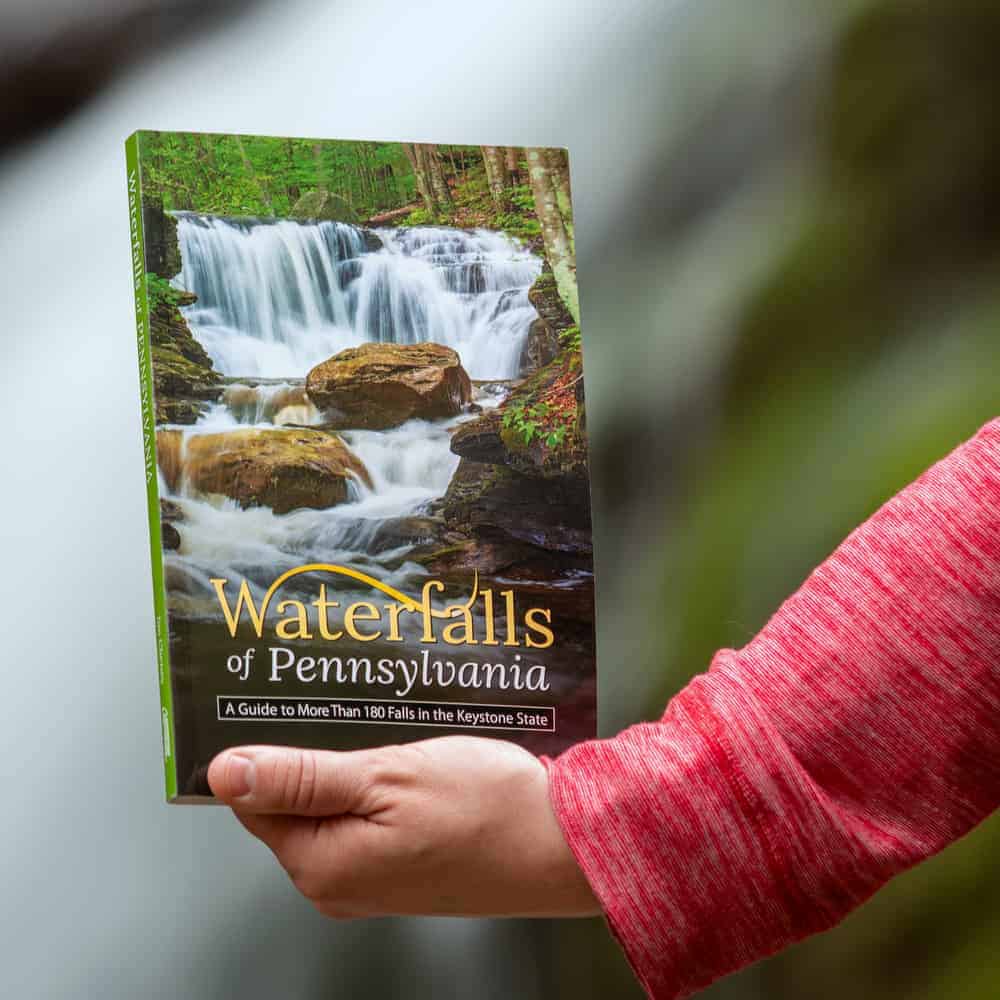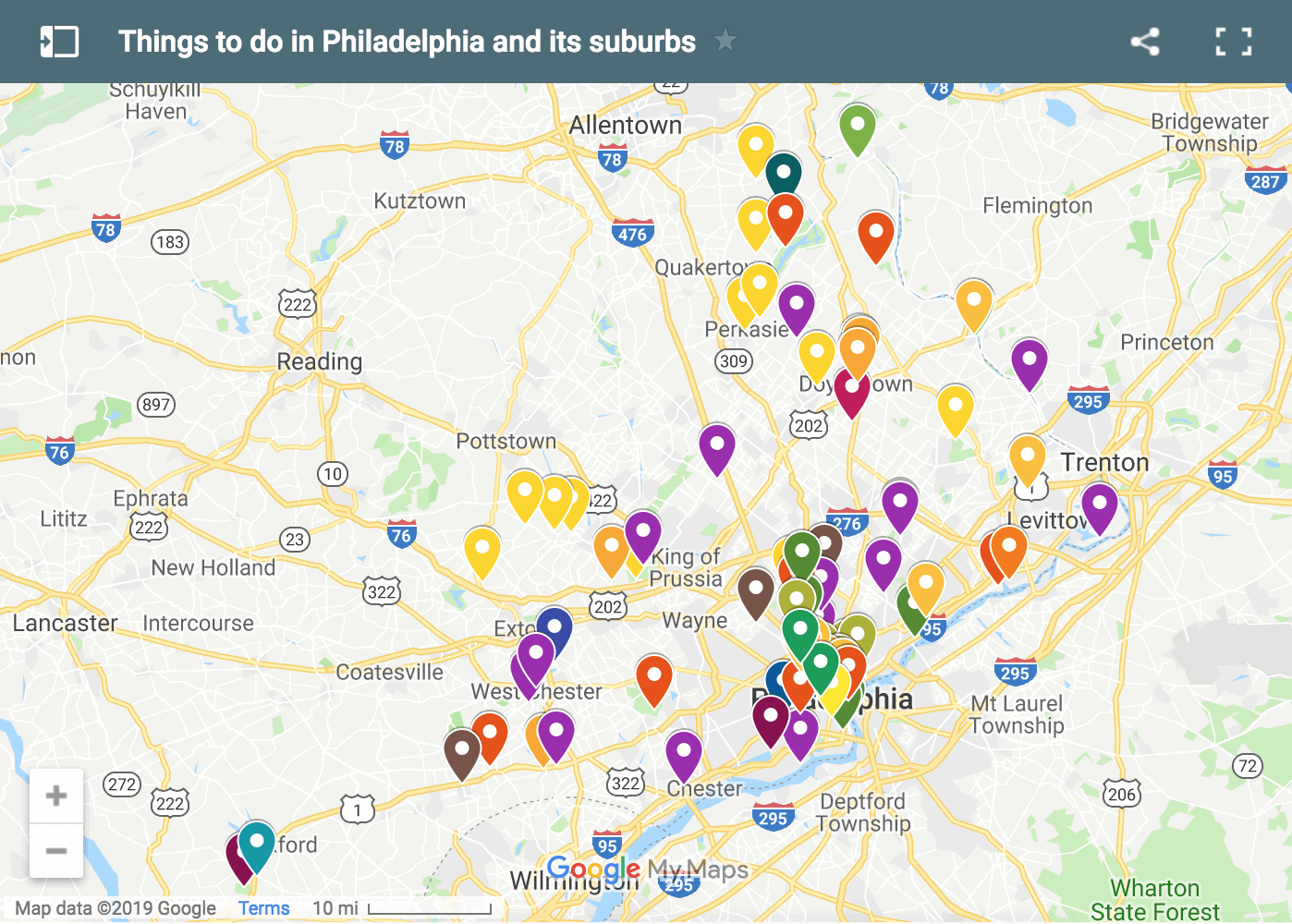There’s something eerie about Mount Moriah Cemetery. Even visiting in the middle of a beautiful spring day, the cemetery seems foreboding. If this was a Hollywood movie set, danger would surely be lurking around every tombstone and behind the seeming impenetrable tangle of trees that is engulfing much of the graveyard.
However, while Mount Moriah Cemetery might feel like a setting for a zombie film, it’s a very real place in southwestern Philadelphia and the final resting place of tens of thousands of Philadelphians.
Mount Moriah Cemetery was established in 1855, and, along with other cemeteries in the area like Laurel Hill Cemetery, was a popular cemetery in Victorian-era Philadelphia for its peaceful setting. However, over the coming decades, the expanding city of Philadelphia enveloped these quiet country resting places, putting them squarely in the middle of the city.
Over the next 150 years, the cemetery became the resting place of at least 80,000 people, though some estimates place the number as high as 300,000.
At 380 acres, Mount Moriah is one of the, if not the, largest cemetery in the United States and spans the border between Philadelphia and Yeadon in Delaware County.

Starting in the 1990s, maintenance of the cemetery started to falter and, in 2011, the cemetery was officially closed. With no ownership and no one to maintain the cemetery, it looked like Mount Moriah might be completely reclaimed by nature. However, with a bit of help from the City of Philadelphia, the Friends of Mount Moriah stepped in.
Today, large portions of the cemetery are still impassable, having been left to nature for several decades, while others are as pristine as you’d expect any cemetery to be.
Recently, I had the chance to speak to Paulette Rhone, Board President for the Friends of Mount Moriah, to find out more about the organization’s history, and their vision for the future of the cemetery.
Rhone became involved with the group in 2011 because her husband was buried in the cemetery after he passed away in 1993. Her story is similar to many of the volunteers that maintain the cemetery today who are often there because they have family members that have been buried in Mount Moriah over the years.

The goal of the Friends of Mount Moriah is to preserve and restore the cemetery. “Someone had to step in and do something,” Rhone says.

"Waterfalls of Pennsylvania" by Jim Cheney
If you love PA waterfalls, you won't want to miss this waterfall book from Jim Cheney, author of Uncovering PA, featuring more than 180 great waterfalls. Order it now on Bookshop.org or Amazon.
The organization stepped into the void after the cemetery was officially closed. At that time, seven years after the last board member for the Mount Moriah Cemetery Association had died, the cemetery had fallen into disarray.
Aside from a couple of sections cared for by the Department of Veterans Affairs, most of the cemetery was a tangled mess of plants with more woodland animals than visitors.
Eventually, the Friends of Mount Moriah convinced the City of Philadelphia to clean up part of the cemetery, on the agreement that the organization would maintain it. Since then, it’s been a constant fight with Mother Nature to tame the expanding forests.
“Areas that looked beautiful in the winter are already overgrown again with two-foot-tall grass,” Rhone told me.

This constant maintenance, combined with the lack of funds, makes clearing new sections of the cemetery difficult. The organization is trying its best to stay one step ahead of the forest, clearing as quickly as they can and trying to deal with invasive plants that have found their way in.
However, there are still large parts of the cemetery that are completely impassable for those not willing to risk thorns, poison ivy, and abundant ticks.
If you’re looking to explore one section of the cemetery, the Masonic Circle, an overgrown area that feels very isolated from the city that surrounds the grounds, is an excellent choice. It is here, that many Philadelphia-area Masons were buried, and many gravestones bear common Masonic symbols.

At the center of the circle is a large monument that is the burial site of William B. Schneider, Grand Tyler of the Masons, who died in 1867. Atop his grave is a large pillar with the Masonic square and compass symbol.
This monument is visible from outside the circle and creates a fitting centerpiece for this area of the cemetery

Just outside this inner circle, you’ll see a flagpole, which may or may not have a flag atop it. Under this flagpole was once the graves of Betsy Ross and her husband, John Claypoole.
While their bodies were theoretically moved to the Betsy Ross House in 1976, it isn’t known for sure if the right bodies were actually moved.
Throughout the rest of the cemetery, it’s not hard to see where the cemetery is well maintained and where it is still being engulfed by nature. However, if you want to plan your trip ahead of time, this great map from the Friends of Mount Moriah gives a great indication of the maintenance of each section.
Those looking for Betsy Ross’ (former) grave can find it in section 51, just above the Masonic Circle.

Ultimately, it may take decades to complete the work, but Rhone told me that they do have a vision for what the cemetery will one day look like.
They don’t expect it to ever be pristine, but they “want to make it as accessible as possible so that it’s welcoming to people. We want it to be a green place in the inner city where people can enjoy the history, nature, ecosystem, and horticulture here.”
When I asked her what the biggest obstacle to this was, I was surprised that she didn’t say the ownership situation, which is still in limbo. Instead, she said that it was a lack of money and volunteers.
The Friends of Mount Moriah host frequent Restoration Events, which are basically cleanup days. Rhone told me that people have come from all over the country to help, but what they really need is more local volunteers.

If you want to help clean up Mount Moriah, you can visit their website to see when the next Restoration Events are being held. Should you rather help monetarily, you can also donate on their website.
However, even if you can’t help, taking the time to explore this beautiful cemetery is a great way to appreciate the hard work that is going into the restoration. Just remember, as you’re walking through this urban jungle, that this is the final resting place for tens of thousands and show the same level of respect that you would in any cemetery.
For more information about this great cemetery and the maintenance work going into repairing it, check out this great video that was shared with me:
How to Visit Mount Moriah Cemetery
Visiting Mount Moriah Cemetery is quite easy. The main entrance to the cemetery is in Philadelphia, located along Kingsessing Avenue, near the intersection with Upland Avenue.
The entrance can be found at the following coordinates: 39.930169, -75.233722
The entrance to the Delaware County side of Mount Moriah Cemetery is located along Cobb Creek Parkway. When I visited, the gate was closed with a sign prohibiting trespassing, so I didn’t proceed. However, Rhone told me that the gate is unlocked during daylight hours, and visitors are welcome to open the gate should it be closed.
The best way to reach the cemetery is by car, as this gives you the ability to drive around the cemetery. However, if you are coming from Center City Philadelphia, Trolley Route 13 runs along Market Street, with stops at 13th, 15th, 19th, 22nd, and 30th Streets.
The 30th Street stop is adjacent to the 30th Street Train Station. From downtown, expect a 20-30 minute trolley ride to the Philadelphia side of Mount Moriah Cemetery.

The cemetery is free and open during daylight hours 365 days a year. Before visiting, I recommend either printing or saving to your phone the map provided by the Friends of Mount Moriah. This will help you find your way around the grounds and help you find which sections are maintained and which are not.
Lastly, it’s worth noting that ticks are a major problem in Mount Moriah Cemetery, even in some of the semi-maintained areas. I would definitely recommend protecting yourself as best you can against them when visiting and sticking to the maintained paths in the overgrown areas of the cemetery.
Looking for more places to visit nearby? Check out Bartram’s Garden, the John Heinz National Wildlife Refuge, the William Penn Landing Site, and the graves of the Baseball Hall of Famers buried in Philly.
[Click here for information on how to use the coordinates in this article to find your destination.]





 "
"




Perhaps the Masons would help fund restoration efforts.
We have been, for years. In fact, a small group of us started back in 2003 while the cemetery was still open, and we continue to this day.
Even though I have no family buried there it’s sad for it to go down this way I wish I could own the property and fix it up and clean it up with the proper funds from the city and state because this is where people’s loved ones were laid to rest no matter how long ago I really wish I could help
Is there a list of those buried there?
https://genpa.org/member-collections/mount-moriah-cemetery-database/